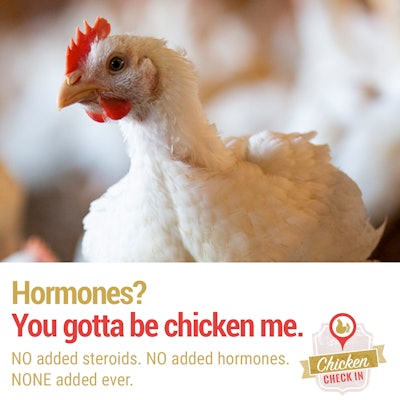
Chicken Check In offers consumers, journalists and other visitors a deeper look into broiler operations, providing a transparent view into the important roles sustainability and animal welfare play in the industry.
For many consumers, the term sustainability has transformed into more than just the environmental impact of a product. It now also encompasses animal welfare, social and other issues. There is also a growing desire for transparency in food production among consumers who want to understand the entire process from farm to fork.
“We take pride in the care of our chickens, but we know it’s on us as an industry to do a better job of providing more information on how our food gets from farm to table. Food is an emotionally-charged topic, and with conflicting information readily available online and on social media, it’s understandable people have questions,” Tom Super, the National Chicken Council’s (NCC) senior vice president of communications, told WATTPoultry.
“From virtual tours, videos, FAQs, infographics, a blog and more, Chicken Check In is our way of inviting consumers to come and take a look at the work we’re doing to progress as an industry in providing safe, healthy and sustainable food.”
Clearing up misinformation
The digital hub and social media resource was first launched by NCC in 2015 to provide transparent answers to questions about chicken production in the U.S.
“In 2015, mistrust in chicken was on the rise. Even among engaged millennials and consumers who spend time thinking about their food choices, knowledge of chicken production was very low,” explained Super. “The mission of Chicken Check In is to provide those who have questions with the level of information they want regarding the care and safety of the chicken they eat.”
Chicken Check In can help clear up misinformation about broiler production – from hormones to cages to welfare to environmental concerns. The resource gives the broiler industry a unified approach to balance the narrative that is often controlled by animal rights groups by explaining not only how broilers are produced, but also why certain methods are used.
Journalists can use Chicken Check In by consulting the resource’s robust FAQ or by taking a 360-degree tour of the entire process, from when a chick hatches to life on the farm to when product leaves the processing plant.
Super’s favorite part of Chicken Check In is the virtual reality goggles that help educate consumers by taking them on a virtual tour of a broiler farm.
“We took advantage of the technology when it was just starting to emerge and it’s a really cool experience. And completely transparent – we left nothing out of the process. Outside of the smell, you feel like you are standing in a hatchery, inside of a chicken house and processing plant! Pre-COVID, we took them to conferences, trade shows, state fairs, desk-side media briefings, Congressional offices, schools and other places. We’ll get back there soon, but post-COVID it will be a great way to take the farm to people, instead of taking them to the farm,” he explained.

An open dialogue
The platform began as a website but has expanded to social media with the launch of branded Twitter, Facebook, Instagram and YouTube accounts. Social media opens a dialogue with consumers, allowing for daily social listening, active trend monitoring and an opportunity to clarify misperceptions about the broiler industry in real time.
“When we began Chicken Check In six years ago, our sole focus was on broiler welfare. In all of our focus groups and consumer surveys, almost all of the questions and concerns that people had were about how the birds were raised. Are they given hormones? Do they live in cages? Are they genetically modified?” Super said.
“One of the great things about Chicken Check In and our social listening and trend analyzation is that we are very nimble and can adapt quickly to the issue of the day or one that we see coming down the road.”
The resource has expanded to include information about the health and nutrition benefits of chicken, as well as highlight the industry progress when it comes to sustainability. In September 2021, NCC launched the first ever Broiler Sustainability Report to recognize the broiler industry’s collective progress in its environmental, broiler welfare and social impact goals, as well as identify opportunities for future growth.

In addition, during the COVID-19 pandemic, the resource pivoted to showcase everything companies were doing to protect employees working at processing plants while continuing to produce food as an essential business.
“It is one thing to tell people and reporters, but another to show them. We posted dozens of pictures of the enhanced safety measures, and our efforts culminated with a video that not only takes you through a retrofitted plant, but most importantly, thanks our employees for their work in helping to keep chicken in the meat case,” Super explained.
To visit Chicken Check In, go to chickencheck.in.

















